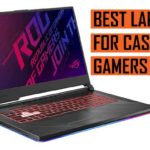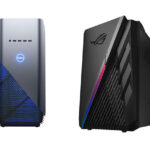This guide is made for casual gamers, entry-level enthusiasts, students, who occasionally jump into games like Valorant, Rocket League, Minecraft, CS2, or League of Legends. If you’re someone who values fluid gameplay without overspending on unnecessary power, you’re in the right place.
You’ve probably wondered “Do I need a high-end rig for light gaming?” The short answer: no. But the right configuration matters.
The biggest challenge with light gaming on desktops is balancing performance with practicality. Many systems on the market either underdeliver or overshoot the requirements, dragging you into a price bracket packed with features you’ll rarely use. Others are deceptively priced, skipping essentials like discrete graphics or fast memory, which makes gaming subpar, even with simple titles.
Without draining your wallet, each recommended system in this guide is tuned to give you excellent responsiveness, crisp visuals, and fluid framerates for light gaming scenarios.
Our criteria focus on several key areas: CPU performance, GPU capability, RAM capacity, storage speed, thermal design, upgradeability, and I/O versatility. Each factor directly influences how smoothly your games run, how quickly your system responds, and how easily you can expand later.
CPU (Processor Performance): A modern quad-core or hexa-core CPU is vital. We prioritize chips like the AMD Ryzen 5 7600, Intel Core i5-12400, or equivalent. These deliver fast single-threaded performance, crucial for engine-driven games that rely heavily on CPU instructions. A solid CPU ensures faster game launches, stable frame pacing, and better AI responsiveness—critical in MOBAs and real-time strategy titles.
GPU (Graphics Processing Unit): For light gaming, integrated GPUs like AMD Radeon Vega 7 or Intel Xe Graphics might suffice—but we strongly recommend desktops with entry-level discrete cards like the NVIDIA GTX 1650, Radeon RX 6400, or Intel Arc A380. These offer smoother gameplay, higher resolution textures, and better compatibility with visual effects. They also free up system memory, keeping performance steady even during longer gaming sessions.
RAM (System Memory): Games today demand more background memory especially if you multitask with music, browsers, or Discord. Dual-channel RAM configurations double bandwidth, reducing stutter and loading hiccups. Systems with only 8GB can bottleneck even lightweight titles.
Storage (SSD vs HDD): A 512GB NVMe SSD should be the baseline. NVMe drives offer ultra-fast read/write speeds, which means quicker boot times, near-instant level loads, and fewer in-game texture streaming delays. HDDs, while cheaper, slow everything down—including game patches, OS updates, and launch times.
Cooling and Acoustic Profile: Light gaming doesn’t generate heat like AAA gaming does, but airflow still matters. Desktops with larger chassis, front-to-back ventilation, and quiet fans help maintain cool temperatures, which in turn extends hardware life and prevents performance throttling.
Upgrade Potential: We recommend towers that allow for GPU and RAM upgrades, with at least one extra PCIe slot and additional RAM slots. Even light gamers might find themselves picking up a used GPU or adding more storage down the line. A system that locks you out of that flexibility forces early replacement.
Connectivity and I/O: Fast USB ports (Type-C included), HDMI or DisplayPort outputs, Ethernet support, and Wi-Fi 6 are ideal. These improve everything from peripheral response to network latency, giving you an edge even in casual online matches.
To set expectations, the desktops we recommend won’t run ultra settings at 4K, but they will give you crisp 1080p performance at medium to high settings in most esports titles and indie games. They’ll also serve well for streaming media, remote work, school projects, and light creative tasks like photo editing or simple video cuts.
Also see: best desktop pc for world of Warcraft
These are the Best Desktop Computers for Light Gaming:
Contents
- MSI Codex R3 Gaming Desktop Intel Core i5-14400F, Geforce RTX 4060, 16GB DDR5, 2TB
- ROG Strix GA15DK Gaming Desktop PC, AMD Ryzen 7 5800X, GeForce RTX 3070, 16GB DDR4 RAM, 512GB SSD + 1TB HDD
- MSI Codex R Gaming Desktop Intel Core i5-13400F, RTX 4060, 32GB DDR5, 2TB
- Dell XPS 8960 Desktop - Intel Core i7-13700, 16GB DDR5 RAM, 512GB SSD + 2TB HDD, NVIDIA GeForce RTX 3050 8GB GDDR6
- CyberPowerPC Gamer Xtreme VR Gaming PC, Intel Core i7-13700F 2.1GHz, GeForce RTX 4060 Ti 16GB, 16GB DDR5, 1TB NVMe SSD
- Skytech Gaming Shadow Gaming PC, Intel i7 12700F 2.1 GHz, RTX 4060, 1TB NVME, 16GB DDR4
MSI Codex R3 Gaming Desktop Intel Core i5-14400F, Geforce RTX 4060, 16GB DDR5, 2TB |
|
|---|---|
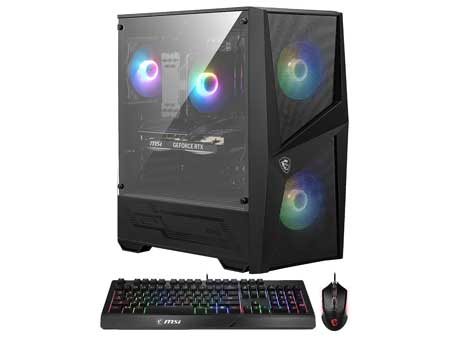 See This On Amazon |
|
| CPU | Intel Core i5-14400F |
| Processor Speed | 2.5 GHz |
| GPU | Geforce RTX 4060 |
| Graphics Card Memory | 8 GB |
| RAM | 16GB DDR5 |
| Storage Space | 2TB m.2 NVMe SSD |
| Operating System | Windows 11 |
| Dimensions | 8.5 x 17.09 x 19.65 inches |
| Keyboard & Mouse | Included |
| Computer Monitor | Sold Separately |
| Advantages | Price, Performance, Storage |
| Disadvantages | N/A |
ROG Strix GA15DK Gaming Desktop PC, AMD Ryzen 7 5800X, GeForce RTX 3070, 16GB DDR4 RAM, 512GB SSD + 1TB HDD |
|
|---|---|
 See This On Amazon |
|
| CPU | AMD Ryzen 7 5800X |
| Processor Speed | up to 4.7 GHz |
| GPU | GeForce RTX 3070 |
| Graphics Card Memory | 8GB GDDR6 |
| RAM | 16GB DDR4 |
| Storage Space | 512GB SSD + 1TB HDD |
| Operating System | Windows 11 |
| Dimensions | 19.6 x 7.3 x 16.6 inches |
| Keyboard & Mouse | Sold Separately |
| Computer Monitor | Sold Separately |
| Advantages | Performance, Design and Build |
| Disadvantages | N/a |
MSI Codex R Gaming Desktop Intel Core i5-13400F, RTX 4060, 32GB DDR5, 2TB |
|
|---|---|
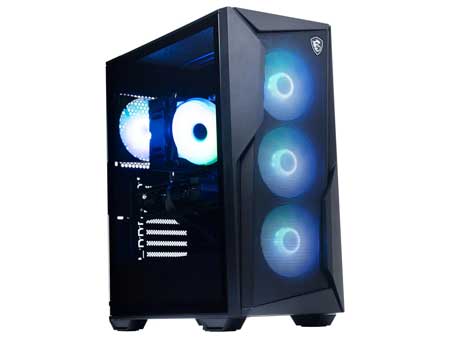 See This On Amazon |
|
| CPU | Intel Core i5-13400F |
| Processor Speed | 1.8 GHz base |
| GPU | RTX 4060 |
| Graphics Card Memory | 8 GB |
| RAM | 32GB DDR5 |
| Storage Space | 2 TB SSD |
| Operating System | Windows 11 |
| Dimensions | 20 x 15 x 15 inches |
| Keyboard & Mouse | Included |
| Computer Monitor | Sold Separately |
| Advantages | Performance, Design, Build quality |
| Disadvantages | N/A |
Dell XPS 8960 Desktop - Intel Core i7-13700, 16GB DDR5 RAM, 512GB SSD + 2TB HDD, NVIDIA GeForce RTX 3050 8GB GDDR6 |
|
|---|---|
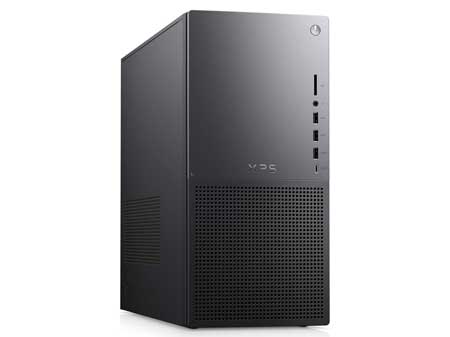 See This On Amazon |
|
| CPU | Intel Core i7 13700 |
| Processor Speed | 5.1 GHz |
| GPU | NVIDIA® GeForce RTX™ 3050 |
| Graphics Card Memory | 8GB |
| RAM | 16GB DDR5 |
| Storage Space | 512GB SSD + 2TB HDD |
| Operating System | Windows 11 |
| Dimensions | 16.81 x 6.81 x 14.68 inches |
| Keyboard & Mouse | Not provided |
| Computer Monitor | Sold Separately |
| Advantages | Performs well, Reletaively affordable |
| Disadvantages | None |
CyberPowerPC Gamer Xtreme VR Gaming PC, Intel Core i7-13700F 2.1GHz, GeForce RTX 4060 Ti 16GB, 16GB DDR5, 1TB NVMe SSD |
|
|---|---|
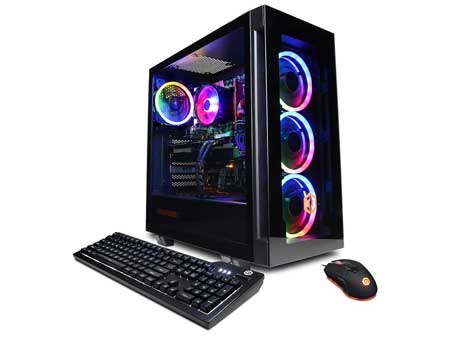 See This On Amazon |
|
| CPU | Intel Core i7-13700F |
| Processor Speed | 2.1GHz |
| GPU | GeForce RTX 4060 Ti |
| Graphics Card Memory | 16GB |
| RAM | 16GB DDR5 |
| Storage Space | 1TB NVMe SSD |
| Operating System | Windows 11 |
| Dimensions | 23.43 x 22.44 x 13.58 inches |
| Keyboard & Mouse | Included |
| Computer Monitor | Sold Separately |
| Advantages | Performance |
| Disadvantages | Storage |
Skytech Gaming Shadow Gaming PC, Intel i7 12700F 2.1 GHz, RTX 4060, 1TB NVME, 16GB DDR4 |
|
|---|---|
 See This On Amazon |
|
| CPU | Intel i7 12700F |
| Processor Speed | 2.1 GHz |
| GPU | RTX 4060 |
| Graphics Card Memory | 8 GB |
| RAM | 16GB DDR4 |
| Storage Space | 1 TB SSD |
| Operating System | Windows 11 |
| Dimensions | 20.14 x 18.12 x 11.12 inches |
| Keyboard & Mouse | Sold Separately |
| Computer Monitor | Sold Separately |
| Advantages | Very good performance, Value, Design |
| Disadvantages | N/a |


